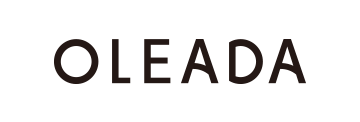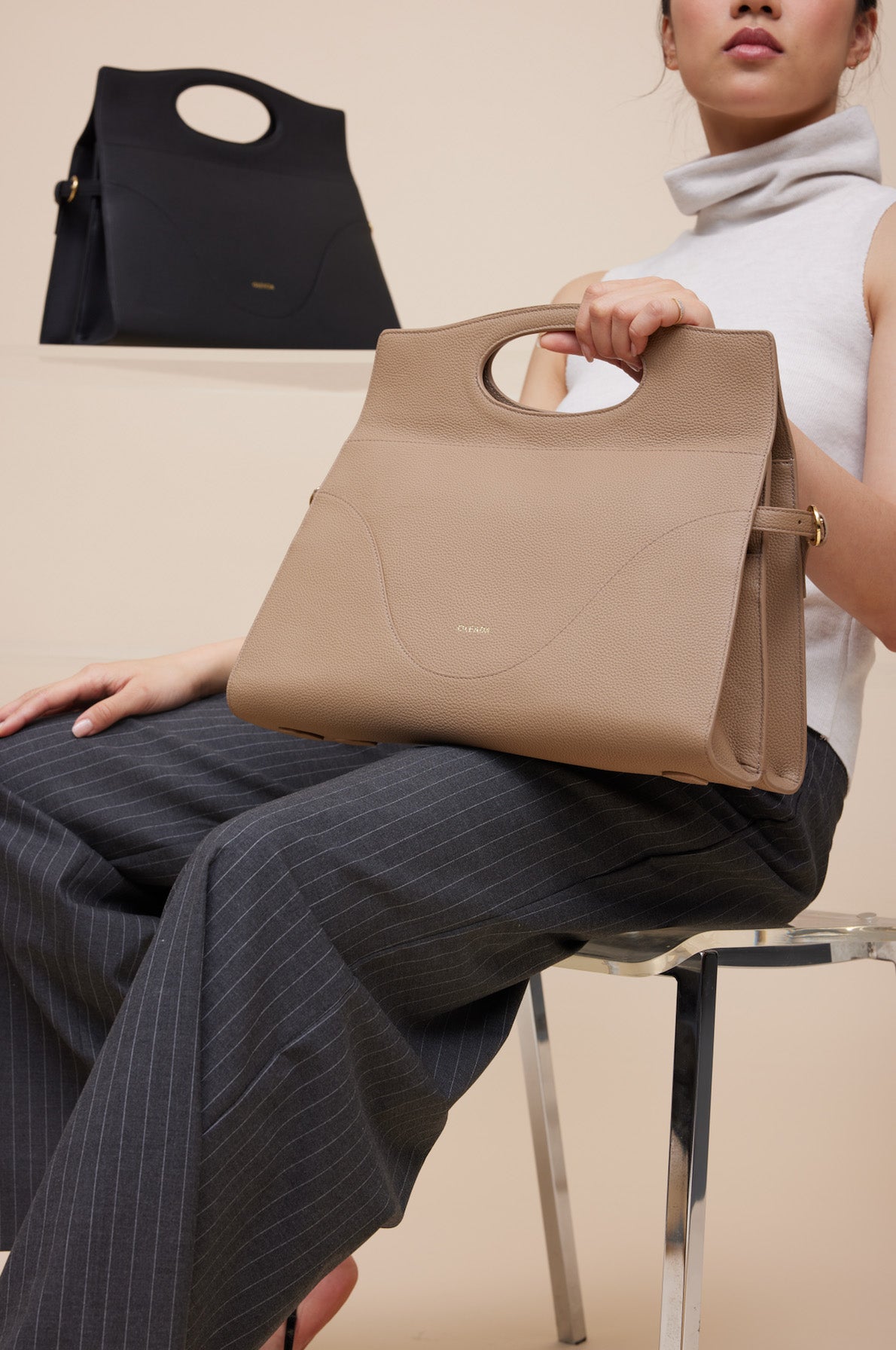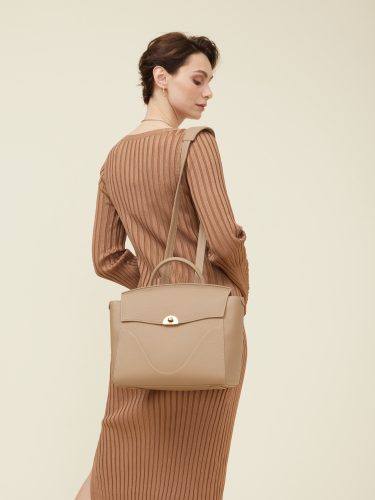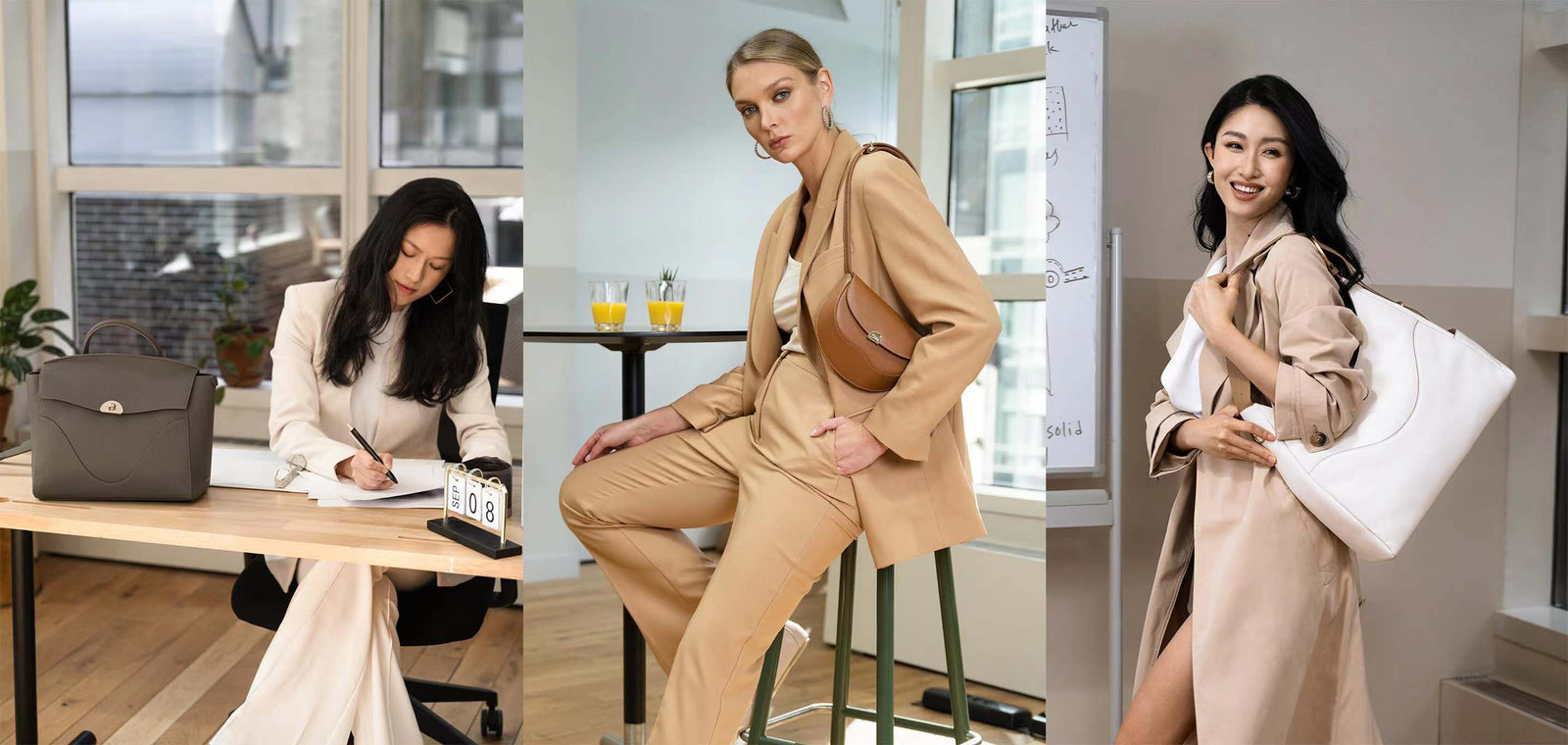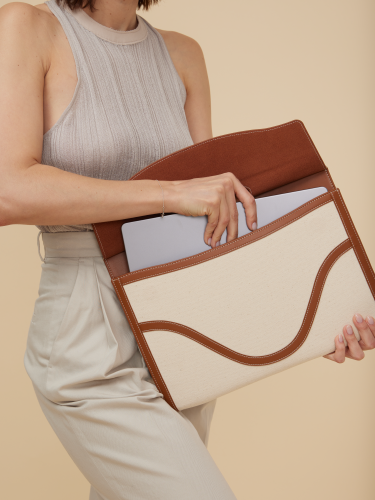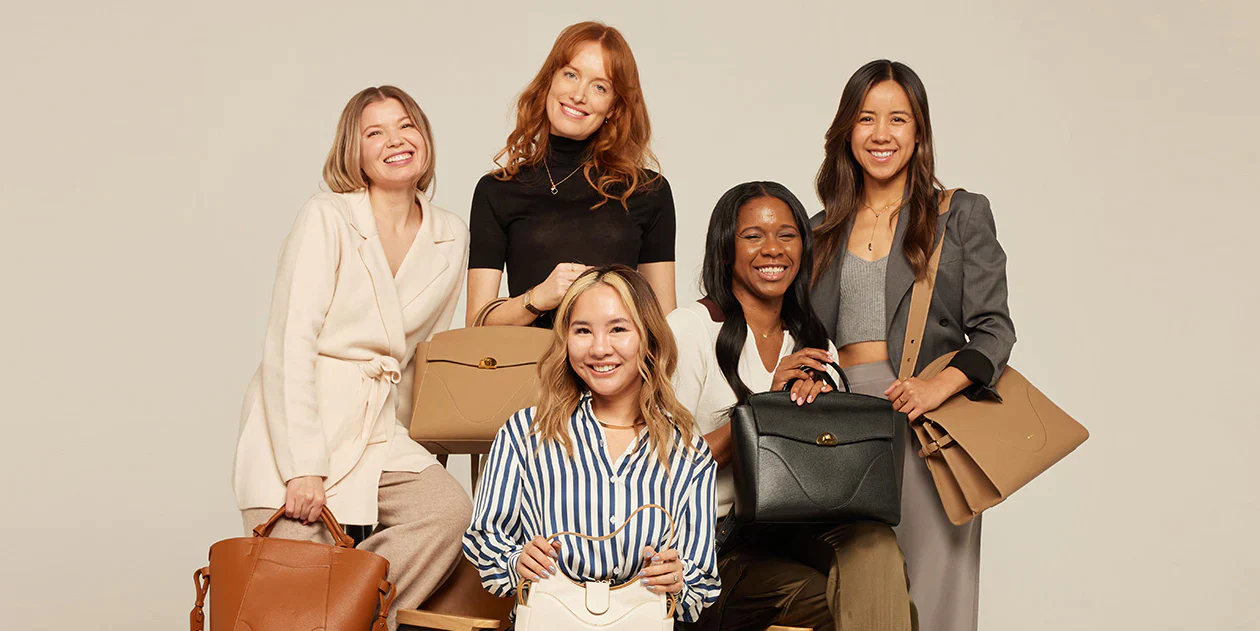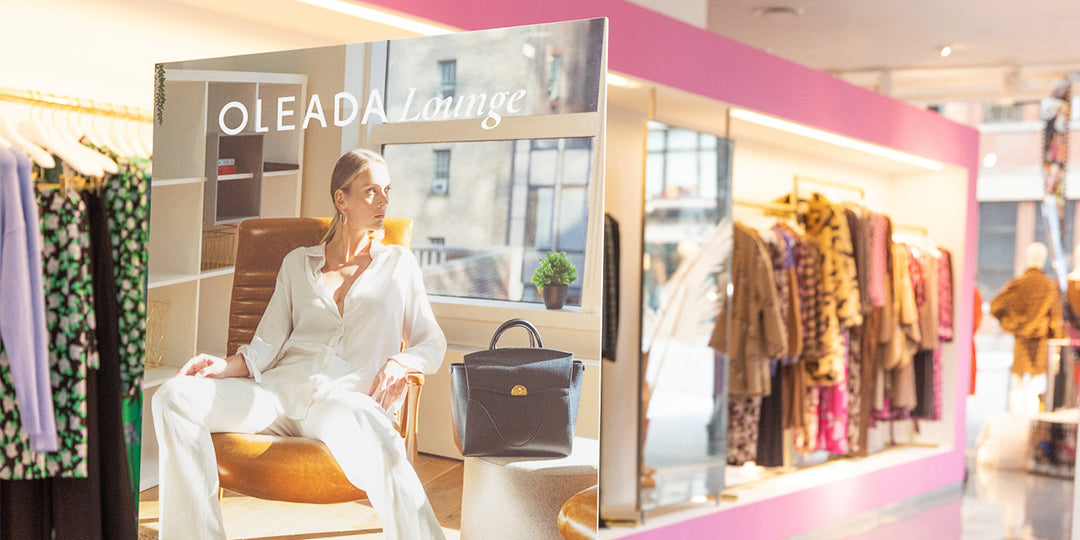Artificial intelligence has made its presence known this year: helping students write their papers, lawyers recall past legal statutes, scientists research historical data, and so on. In true nature with my brand’s name of “ocean waves,” I thought, why not ride the AI wave and see what it could bring to the fashion world? And the answer is simple: a lot.
For our World Oceans Day campaign that launched on June 8th, I let the AI tool MidJourney inspire the direction of our beachside photoshoot. Featuring our Wavia and Reverie Hobo bags, I knew the inputs for each bag needed some mild human interference for the AI photo generator to both capture my brand's vision, and give my co-founder Tracy and I something uniquely ours.
When my team asked whether or not I believe artificial intelligence poses any risk to the artistry that goes behind designing each of the brand’s handbags, I said there’s zero competition. AI is just a tool for you to realize your vision in a more efficient way, nothing more. It’s similar to what a paintbrush is to a painter, and a camera to a photographer: a tool that enables success.
With that, I was proud to announce our Ocean Weightlifters campaign as our first successful AI-generated sustainable campaign. Feeding MidJourney with photos of our model and bags, my Creative team then directed the AI tool with storytelling prompts. For the Wavia, we sought after images of an elegant girl wearing a blue silk slip dress and beige leather handbag, dancing in the ocean waves with the NYC skyline in the background. For the Reverie Hobo, we pictured the same setting, but asked the AI to give the model more dynamic poses, this time in a white leather hobo bag and yellow summer dress.
To get exact photographic textures for each of our images, our photographer for the shoot, Jialu Cheng, added keywords like film grain, 4K, 50mm-lens, and ultra-detail to each prompt. Her experience in digital/print magazine publications such as Lens Magazine, Selin, and Moevir Paris helped her zero in on her genre indicator term: “campaign by Tim Walker,” which in turn helped MidJourney generate what I found to be a high-quality campaign.
Here’s what AI generated, versus how our final campaign shots came out:


As you can see, I found the use of AI to be a tremendous source of inspiration. The same can be said for other brands that use AI in their business models, like Gucci, Zara, Macy’s and Dior. But what can we expect of artificial intelligence in the fashion world, especially if more brands use it?
Cheng suggested it can do more than just push a brand’s creative boundaries.
“By generating new forms of visual art in collaboration with human artists, and helping people better express themselves through image language, I see pure potential in AI to optimize existing processes within fashion,” Cheng told me.
For one, AI can both identify and predict fashion trends based on its pattern recognition software and sentiment analysis from social media content or multiple sources of consumer data. This helps fashion brands curate their new designs to best fit their target audience. For example, OLEADA is a luxury handbag brand that seeks to create functional bags for the modern working woman. If I input keywords like “work bag” and “functional handbag” into an artificial intelligence system and ask it to predict trends in women’s workwear, I can use the results to create a catered selection of our quality-made bags to the audience I know is looking for it. Then, the ratio of supply and demand will naturally begin to equalize due to a better transparency in data collection.
Another aspect lies in fashion design. There’s an ongoing debate on whether AI has the skills to replace experienced designers, and as I’ve stated earlier, AI only works as good as your human inputs. Working in tandem with designers, artificial intelligence machinery can be equipped to produce more of their design ideas at a rapid rate. Our campaign shoot could’ve taken a whole day if we debated each pose the model did, and every outfit she wore. With the use of AI, we had a set of proper guidelines to adhere to, and were off the beach within three hours.
So I leave you all with this: Creativity can never be replaced by AI, because it comes from our human consciousness of our ever-changing reality.
